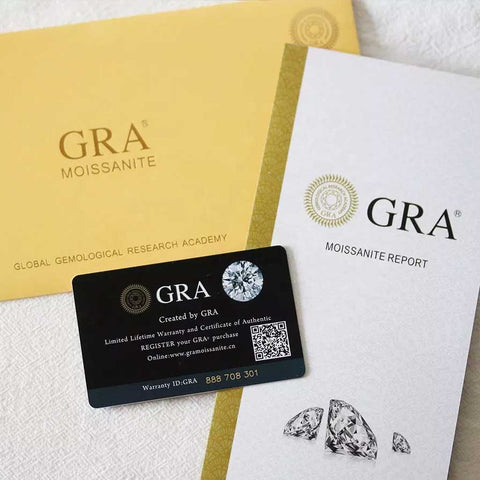Your Cart is Empty
Moissanite vs Diamond
by Judy Wood October 22, 2021 2 min read
Moissanite
The brilliance of a Moissanite over a diamond is its most obvious advantage. Don O'Connell (CEO and President of "Charles and Colvard" the original creator of Moissanite) says" “It has more fire and brilliance than any other gemstone, meaning it has more sparkle". He also adds "because Moissanite is double refractive, it is cut differently than diamonds to enhance the sparkle.”
Moissanite is an almost colourless gemstone that is made from silicon carbine. It was first discovered in its natural state by Henri Moissan, a French scientist, in 1893 amongst the remnants of an ancient meteor crater in Arizona.
Natural Moissanite is extremely rare and found in such small pieces, it makes it impractical for use in jewellery. So it is manufactured in a laboratory using the same material found in natural Moissanite - Silicon Carbide.
Hardness - Moissanite vs Diamond
Gemstones are measured on a scale referred to as the "Mohs" scale of hardness. A diamond is the highest gemstone on this scale which rates from 0 - 10. Diamonds sit at 10 on the Mohs scale. Moissanite has a Mohs hardness of 9.-9.5. Tungsten carbide sits at 9 and Titanium at 6.
Sparkle - Moissanite vs Diamond
The refractive index is a measure of the speed at which light moves through material and gives of its brilliance or sparkle. The refractive index of Moissanite and diamond is very similar, but Moissanite sits at 2.65 and diamonds at 2.42. This means that a Moissanite stone will appear to have MORE sparkle than a diamond of the same size.
Certificate of Authenticity
When you purchase a Moissanite stone, you should receive a certificate of authenticity with it - provided by the Global Gemological Research Association (GRA). Always check with the seller to ensure that you receive one, to be assured you are getting a real Moissanite.

To see Frenelle's range of Moissanite jewellery, click HERE
Recent Articles
- What does the 925 in Sterling Silver mean? October 16, 2025
- How do I keep my jewellery clean? January 07, 2025
- A Blokes Guide to Buying Jewellery Gifts November 30, 2024
- What are Sleeper Earrings? July 24, 2024
- Hair Accessories | A complete Guide June 18, 2024
- Charm Bracelets - a buyer's guide May 02, 2024
- What is an "Evil Eye"? September 14, 2023
- Eternity Rings: what are they and when is an eternity ring given? September 01, 2023
- Earring Backs - which one to use? August 08, 2023
- What is a NACRE Pearl? May 06, 2023
